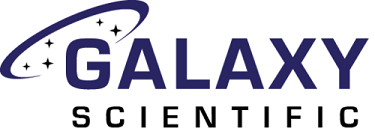Fats and oils are recognized as essential nutrients in human diets and are presented in varying amounts in many foods. They not only provide the human body with a concentrated source of energy, but also supply essential fatty acids that are precursors for important hormones.
The quality of edible fats and oils are assessed through parameters such as: iodine value (IV), trans content, peroxide value (PV), anisidine value (AV), saponification number (SN), free fatty acids (FFA), and solid fat content (SFC). The traditional chemical and chromatographic methods used to analyze edible fats and oils are labor intensive, require the use of solvents and reagents, and are extremely time consuming.
.jpg)
FT-NIR spectroscopic analysis of fats and oils is fast, requires no sample preparation, and can analyze multiple parameters with a single measurement. An infrared spectrum of an oil contains a wealth of information that can be used to determine important factors. For example, the OH stretching region can indicate the presence of moisture or hydroperoxides, the latter commonly measured by the chemical PV test. The intensities of the bands in the CH region and of the ester linkage absorption are related to the average molecular weight of oil, commonly evaluated by SN determinations.
The COOH absorption is indicative of lipolysis or free fatty acid (FFA) content of an oil. The presence of spectral features related to aldehydes and ketones, as well as conjugated dienes, suggests accumulation of secondary oxidation products commonly measured by the thiobarbituric acid (TBA) test or the AV test. The isolated trans band provides a direct measure of isolated trans isomers, and the combination of CH cis and CH trans absorptions provides a measure of total unsaturation or IV.
The complete spectrum of a refined, melted fat characterizes its overall triglyceride composition, which in turn can be related to its SFC and also provides information about the relative amounts of saturated, monounsaturated, and polyunsaturated fatty acids in a fat or oil.
Near-infrared (NIR) spectroscopy contains combination bands and overtones of fundamental vibrations in the infrared region and provides several practical advantages over infrared spectroscopy. For example, while infrared measurements require direct contact with the sample, NIR can measure oil samples in disposable glass vials, significantly reducing the risk of cross contamination. What’s more, NIR spectra can be measured on-line with a fiber optic probe.
NIR spectroscopy has been recognized by AOCS (American Oil Chemist Association) and AOCS method Cd1e-01 uses FT-NIR to measure Iodine Value (IV). In addition, it proves to be a useful tool in the detection of oil adulteration.
Experimental
Various types of fat and oil samples were measured using a (Galaxy Scientific, Nashua, NH) FT-NIR spectrometer with heatable sample compartment. Oil samples were measured in an 8mm glass vial at 75 °C following AOCS method Cd1e-01. Three spectra per sample were collected using 8 cm-1 resolution.
Quantitative Analysis
Spectral Sage™ PLS Quantitative Analysis software was used to develop partial least square calibrations for various parameters.
NIR spectra of 4 different types of oils with varying degrees of unsaturation are shown in Figure 1. Partial least square calibrations were developed for, but not limited to, the following parameters:
- Iodine Value (IV)
- Anisidine Value (AV)
- Linolenic acids (C18:3)
- mono-unsaturation (MUFA)
- poly-unsaturated (PUFA)
- Saturated (SAFA)
.jpg)
Figure 1. FT-NIR spectra of oils in the range of 4500—9000 cm-1
The cross-validation results of iodine value (IV) and linolenic acids calibrations are displayed in Figure 2 and Figure 3.
.jpg)
Figure 2. Cross-validation of IV calibration
.jpg)
Figure 3. Cross-validation result of C18:3
Conclusion
FT-NIR analysis of edible oils is fast, requires no sample preparation, and can analyze multiple parameters with a single measurement. Instantaneous results that are comparable to traditional lab methods can be obtained across a wide range of parameters.

 Contact Galaxy Scientific’s experienced applications support team for more information.
Contact Galaxy Scientific’s experienced applications support team for more information.

This information has been sourced, reviewed and adapted from materials provided by Galaxy Scientific Inc.
For more information on this source, please visit Galaxy Scientific Inc.